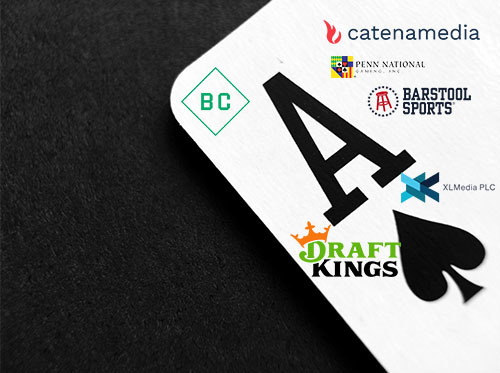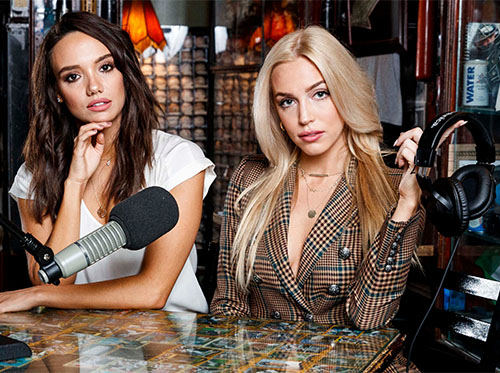Barstool Sports & The Ringer: Lessons About Growth
WHAT just happened in sports media M&A? Hint: 4 deals in 2 weeks
2020 has already become a landmark year for sports media.
-
Jan 21: The Athletic raised a Series D funding round at a valuation of $500M.
-
Jan 24: Minute Media acquired FanSided from Meredith, its third sports media acquisition since 2019 (Minute Media is now expecting to generate $100M+ in revenue in 2020).
-
Jan 29: Penn National Gaming acquired a minority stake in Barstool Sports, valuing the company at $450M.
-
Feb 5: Spotify acquired The Ringer for an undisclosed value (Bill Simmons was reportedly seeking $200M).
At RockWater, we believe it’s important to be up to date on the What – but we’re more fascinated by the Why and How. We’re particularly intrigued by the through line dynamic we observed between Barstool Sports and The Ringer. Their paths to recent investments / exits provide fascinating case studies on how to effectively incubate IP, talent, and community in today’s increasingly fragmented media ecosystem.
WHY were Barstool Sports and The Ringer acquired at premium valuations?
These new sports publishers built differentiated value through developing and monetizing audience, community, IP, and talent at scale. And, it took them decades to do it. Both Penn National Gaming and Spotify now intend to strategically tap into these powerful assets to bolster and broaden their business models (we’ll save that analysis for another article).
Barstool has 59 shows, 70 personalities, 30k paid OTT subscribers, 18M social media followers, 40M global podcast streams/downloads, and 60-65% of its annual revenue ($90-100M) is from D2C and commerce initiatives.
The Ringer has a podcast network with 35M downloads and $18M in annual ad sales (2018) across its 28 shows, and a website with over 15M monthly visitors (2018).
HOW did these two companies develop and scale audience, community, IP, and talent?
Both Barstool and The Ringer have achieved significant growth, scale, and community by cultivating a diversified portfolio of talent, IP, and programming that’s varied yet unified by a well-defined brand DNA (cultivated by Dave Portnoy and Bill Simmons, respectively).
Both companies started as Boston sports blogs built upon the connection forged between a sole writer and his loyal readership. These singular personalities managed to dramatically scale up their teams (Ringer: 90, Barstool: 250) and reach through expansion into new mediums (video and podcast) and programming categories (food and even “The Bachelor” recap shows). However, the distinct ethos that once defined their brand, and the rabid audience loyalty developed through this “1:1 connection” between personality and reader, have not been diluted.
This success is a result of having the right systems, team, leadership, and culture in place to monetize moments, mobilize community, and take low-risk bets on content and talent.
1 – Build Brand Voice
Dave Portnoy began Barstool Sports 17 years ago. Bill Simmons began amassing a following 27 years ago when he began BostonSportsGuy.com. Since their origins, both have gained cultural currency and dedicated followings by projecting their unique voices across every media platform that has come and gone throughout their careers.
Simmons’ fans followed him from his AOL-owned blog to ESPN, to ESPN’s Grantland, to ESPN podcasts (Simmons is sometimes referred to as “The Podfather”, as he was one of the medium’s early pioneers), and ultimately to The Ringer (Spotify is now betting they’ll follow him to their platform).
Portnoy spent the past 17 years connecting with fans by showcasing his charismatic (and very polarizing) personality across every medium possible. Portnoy turned his life into a multi-platform Truman Show…and his fans can’t get enough. One extreme example is a short-lived video series called “Dave Walks To Work”: Portnoy wanted to prove that he can make any video entertaining – even something as banal as a live-stream of his daily commute (he was vindicated, as these videos generated hundreds of thousands of Facebook views).
However, on the path to a 9-figure valuation, gaining a cult Internet following is the (relatively) easy part. Scaling is much more difficult.
Social and traditional media are full of marquee personalities with passionate fans. These personalities typically monetize this following by signing lucrative deals with networks, platforms, or brands. Desus & Mero (Showtime), Clay Travis (Fox Sports), and even Howard Stern (Sirius) are noteworthy examples. Few take their personal brand and scale it up into a full-fledged media company (e.g. Gwyneth’s Goop).
What systems and processes have Portnoy and Simmons established that allowed them to join Gwyneth as outliers?
2 – Incubate Talent Personalities and Formats
For any media brand to scale, it’s essential not to just go deep by connecting with a core audience of super fans, but it must also go wide by programming for a broad spectrum of verticals. Both Barstool and The Ringer managed to go deep and wide by incubating talent across gaming, movies, celebrity gossip, basketball, TV recap shows, and more. Each personality connects with a different type of fan, yet shares the brand’s overarching voice / humor / POV.
Barstool Sports CEO Erika Nardini explains their approach:
“We have [60+] personalities that we are growing daily who will become the next ‘Big Cat’ and become the next ‘PFT’ [Barstool’s most popular podcast “Pardon My Take”]. They will be women, they will be people of color, they will be people with all different backgrounds, and they will find their own niche…I spend a lot of time thinking about how we diversify that…You like sports? We’ve got stuff for you. You like entertainment? We’ve got stuff for you. You live in New York or you live in a major metropolitan area or in a college town or the Midwest? We got you…
…We’re approaching new things in a Barstool way, and we understand what young audiences care about. There is no vertical we wouldn’t go into if we found it funny and had the right person who delivered something compelling.”
Cultivating a brand-unified talent roster that can speak to the super fans of any lifestyle category requires an opportunistic lens; a keen eye for talent, and intimate knowledge of one’s brand and fanbase. Portnoy and Simmons’ expertise in this area propelled them from blogs to behemoths.
Many of the most popular fan favorites on the Barstool roster of 70 personalities were incubated from within. For example, “Chicks In The Office”, a celebrity gossip and pop culture show that has become one of Barstool’s most prominent franchises, is hosted by two former Barstool Sports interns (“Ria” and “Fran”). Portnoy and Nardini recognized their potential and gave them a platform and resources to connect with audiences. Barstool now produces a “Chicks in The Office” podcast, Sirius radio show, and Snapchat Discover show. Barstool even launched a “Chicks” section on its website, which receives nearly 2M monthly pageviews (about 25% of all traffic to Barstool’s site). As a result, female-driven content is Barstool’s fastest-growing category across podcasts, video, and social.
Simmons employs a similar strategy at The Ringer. Many of the brand’s most popular audio and video franchises are built around personalities that began as writers for Grantland or The Ringer blogs. Simmons uses his taste and instincts to curate a talented pool of personalities that align with, and expand the scope of, his voice and cultural POV. This process enabled The Ringer to expand beyond sports and become the go-to brand for “nerd culture”.
Mallory Rubin and Jason Concepcion are former Grantland writers (Concepcion was hired after Simmons noticed his funny NBA insights on Twitter) and current writers at The Ringer. They’ve gained a loyal following in part by talking about their love for “Game of Thrones”. In anticipation of the show’s final season, the duo launched a podcast called “Binge Mode”, where they rewatch and breakdown each episode of the series one by one. It became one of the network’s biggest hit franchises leading to a Twitter Live show, new seasons dedicated to other fanatic favorites like “Harry Potter” and “Star Wars”, and a dedicated storefront on The Ringer website (it features 25 different “Binge Mode” branded products).
3 – Partnerships, M&A, Acqui-hires
TO BE CONTINUED…………
Unsurprisingly, we have a lot more to say on this subject! We’d love to walk you through the other ways that Barstool and The Ringer have scaled their IP, talent, and programming through external initiatives like:
Partnerships
-
E.g. Barstool’s podcast with A-Rod
-
E.g. Barstool’s pizza app with Slice (175K downloads and 10K orders in the 1st month)
-
E.g. The Ringer’s podcast with Majordomo’s David Chang
M&A & “Acqui-hires”
-
E.g. Barstool’s Warren Buffett-esque acquisition of “Call her Daddy”
-
E.g. The Ringer’s “clutch” free agent signing of Ryen Russillo from ESPN
—
Ping us here at anytime. We love to hear from our readers.



